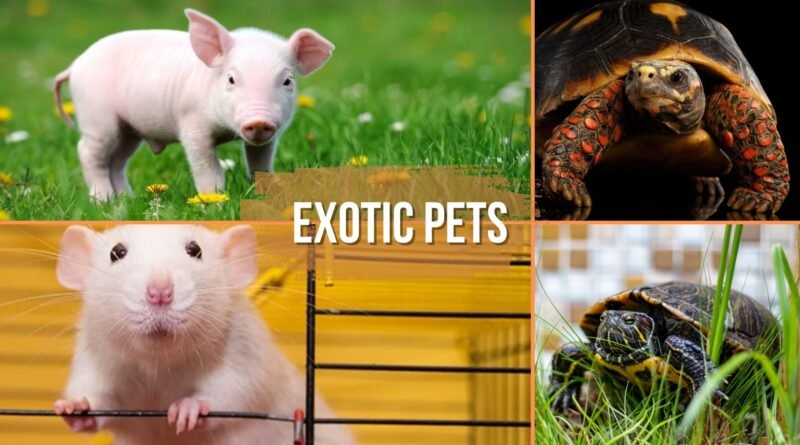4 exotic pets to fall in love with
In every corner of the world, irrespective of cultural differences, pets are an integral part of countless people’s lives. While cats and dogs remain the most popular choices, there is a growing trend towards adopting exotic pets as companions. These unique creatures offer a distinctive experience, and it’s important to understand their characteristics, care requirements, and legal considerations.
From endangered species to other fascinating exotic animals, there is a wide variety of options available. In fact, many exotic animals make excellent pets, providing an opportunity to appreciate the beauty and diversity of our natural world. From domesticated pets to pet reptiles, there are numerous unusual animals to choose from.
So, if you’re looking for an extraordinary companion, consider exploring the realm of exotic pet species and discover the best exotic pets suited to your lifestyle.
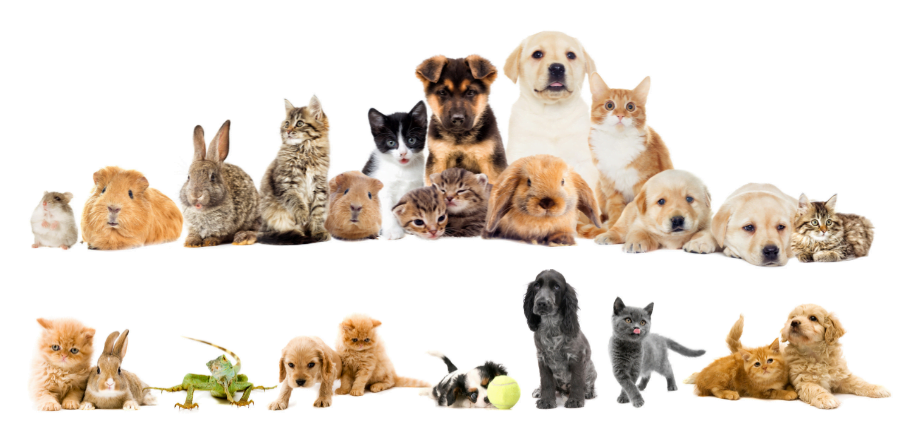
History of Pets
Currently, pets are extremely popular in homes around the world, and the benefits for health, both physical and mental, are scientifically proven. Benefits such as improving mood, reducing stress, and even reducing blood pressure are just some of the countless advantages of having a pet as a companion at home. However, this popularity did not always exist.
We know that dogs are the most common pets in existence and that their domestication began thousands of years ago. However, initially, they were used as “working animals”, serving as assistants in hunting and protecting the house or herds. Only over time did the relationship between dogs and humans become closer.
The popularity of pets as we know them today began to occur during the 19th and early 20th centuries. It is believed that it was due to industrialization and as people began to live in more urban environments, leaving rural areas, and living in apartments, the presence of pets inside the home gradually became more common. Until, from the middle of the 20th century to the present, pets are seen as members of the family, which ended up generating a prosperous industry, both for animal breeders and services, such as veterinary services, care such as dog grooming, tours, hotel, and food production.
Among the most common pets are dogs, as we mentioned previously, cats and birds. However, the search for exotic pets is growing and below we will list 4 of them. Let’s meet!
Exploring the World of Exotic Pets
In the realm of exotic pets, exotic animals often top the list of ultimate companions for pet enthusiasts. These creatures, ranging from exotic pet species to wild animals, offer a unique experience that traditional domesticated pets often can’t match.
One intriguing aspect of owning exotic pets is the diversity they offer. From pet reptiles slithering in glass tanks to brightly feathered birds native to tropical regions, there’s an array of unusual pets to delight any pet lover. These exotic animals boast distinctive characteristics, bringing a piece of the wild straight into our homes.
The more daring might even consider adopting endangered species under proper guidelines, contributing towards the conservation of these precious creatures. However, it’s essential to remember that many exotic animals require specific care to thrive in domestic environments.
Even within the category of exotic pets, there’s a wide spectrum of species. Some people might opt for a furry friend like a Fennec Fox, while others might find solace in the calm demeanor of a Tortoise. Thus, the best exotic pets are the ones that align well with your lifestyle and care-giving capacity.
There are also other exotic pets that are more suited to experienced keepers due to their specific needs or temperaments. For example, the Sugar Glider is a small marsupial that requires a lot of interaction and socialization, making it a pet for those who have adequate time to dedicate.
Taking care of many exotic pets is a rewarding task, offering a chance not only to appreciate the beauty and diversity of our natural world but also to foster a connection with these unusual companions. It is a journey of discovery and companionship, of understanding and cherishing the rich tapestry of life on our planet.

Exotic Animals: Mini pig
The origin of these exotic pets, mini pigs, is still not very clear. What is known is that, in the 1980s, a researcher at the Bowmanville Zoo in Ontario, Canada, used artificial selection for selective breeding, ultimately achieving the ideal size for the so-called mini pigs. In other words, mini pigs are not a natural breed but rather a result of intentional breeding. Selective breeding involves mating pigs that are smaller in size, have less weight gain, and have more delicate bones.
Mini pigs are not only adorable and cuddly but also highly intelligent. They have a life expectancy of 12 to 20 years and can grow up to 23 inches long, weighing between 44 to 110 pounds. These highly social animals require mental stimulation and interaction, both with their owners and with other animals, whether of the same species or not. While mini pigs are charming, they still require proper care and ample space to play.
When it comes to legal issues, it’s important to note that every city in the USA has its own zoning regulations. If you’re considering having a mini pig as a pet, it is crucial to check with your local government to ensure that mini pigs are allowed. It’s worth mentioning that many cities do not permit pet pigs within city limits, which could pose a challenge for both you and your beloved pig.
Mini pigs fall under the category of exotic pets, making them part of the diverse range of unusual animals that people choose to keep as companions. While they are not considered wild animals, they are certainly different from traditional domesticated pets like cats and dogs. It’s important to understand that many exotic pet species, including mini pigs, require specialized care and attention to ensure their well-being. By considering the unique needs of these exotic pets, you can provide them with the best possible care and ensure their happiness as part of your family.
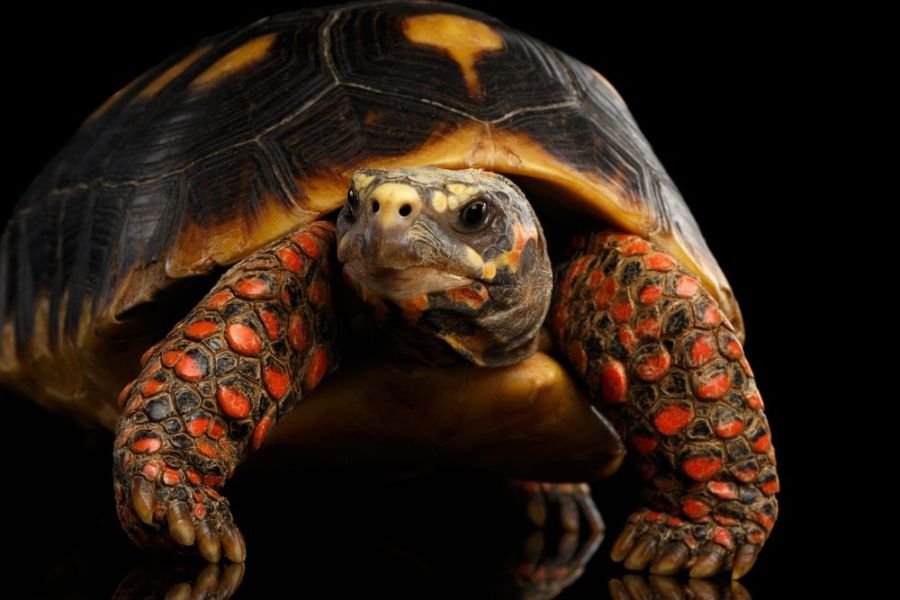
Red-footed Tortoise (Chelonoidis carbonaria)
The red-footed tortoise is one of the only two types of tortoise that is authorized by IBAMA (Brazilian Environmental Agency) to be bred in captivity, meaning it can also be raised as a pet there.
The red-footed tortoise measures approximately 11 to 15 inches in shell length and weighs 4 to 13 pounds, depending on food and living conditions.
The tortoise is a reptile of the genus Chelonoidis, native to the Amazon region and the Brazilian cerrado, prefers warmer climates and is not very common in southern Brazil due to the low temperature in winter. They are terrestrial animals and prefer to live in places with dense vegetation for food and shelter. Its diet in nature is essentially herbivorous (vegetables, leaves, and fruits).
To have a tortoise at home, in addition to authorization from the competent body in your country, it is necessary to have a space with the same characteristics as the wild environment in which it lives so that it can stay during the day, as they need vitamin D, which comes from sun exposure. However, you must be careful with the temperature, they cannot tolerate cold weather. A terrarium to keep it warm is a good call.
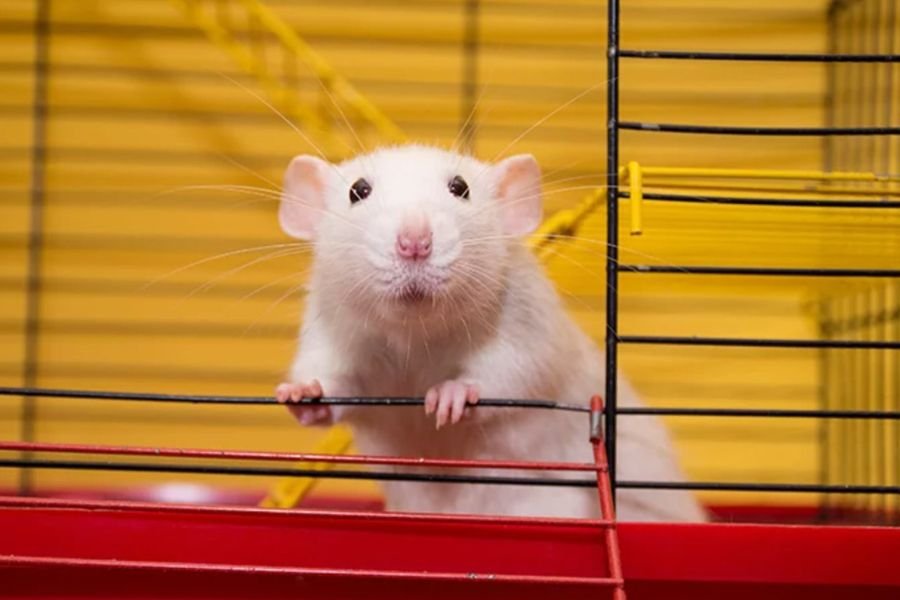
Exotic Species: Fancy Rat
In many parts of the world, the fancy rat has already gained a place in the hearts and homes of thousands of owners, becoming one of the easiest exotic pets to care for.
Extremely intelligent – they can even recognize their names and learn tricks, they are docile, playful, and highly social. Related to wild rats, this cute little thing has nothing to do with the Hamster, although some people call it the Hamster rat. Curious by nature, one of the characteristics that differentiate them from their other rat relatives (who are aloof and scared), fancy rats love affection and may want to stay in your lap longer than you think.
Its average life expectancy is 3 to 4 years, an adult individual weighs around 21 ounces and has nocturnal habits. Their diet consists of specific feed, hay, fruits, vegetables, and boiled eggs.
Its cage must be spacious, with several floors and the possibility of physical exercise. For just one rat to live, the minimum space needed in the cage is 23 inches, which must always be kept clean, because contrary to popular belief, this rat likes cleaning very much, therefore, weekly cleaning of the cage is essential.
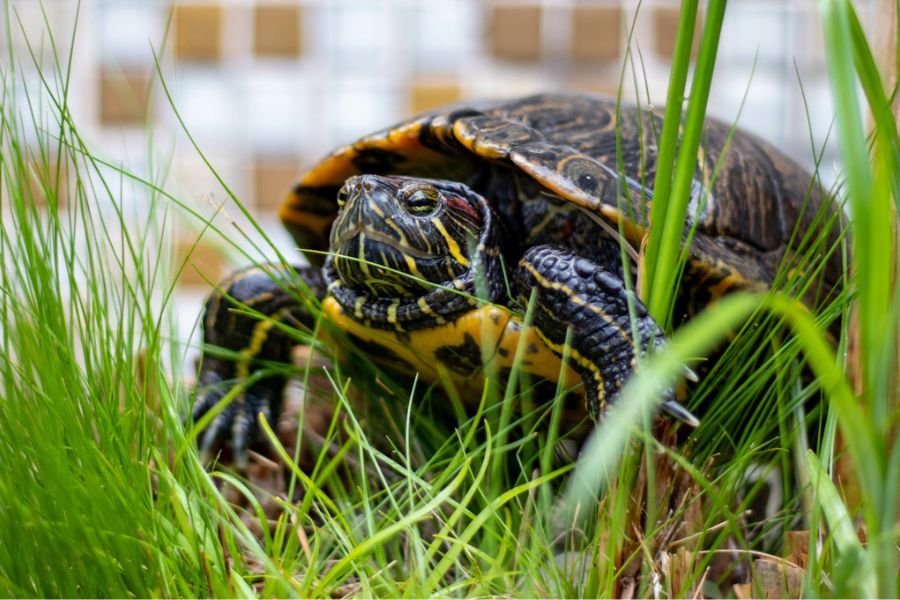
Exotic Pet: Black-bellied slider (Trachemys dorbigni)
This is another exotic pet, a chelonian, that will surely captivate you and be ideal if you’re looking for a low-maintenance yet resilient companion. Meet the terrapin, a semi-aquatic creature.
Known for their calm and playful nature, these cold-blooded animals rely on the sun to keep warm. To create a suitable habitat, it is important to maintain the temperature of their aqua terrarium at a range of 82°F to 84°F, and consider using a thermostat for precise control. The terrarium should include both a dry platform and a water area since these semi-aquatic animals live both in water and on land.
Feeding a terrapin as a pet is not complicated, as there are specific foods available for their species. However, it is crucial to understand the legal considerations before bringing a black-bellied slider into your home. Make sure to research the laws in your country regarding the ownership of such exotic pets. For instance, in Brazil, you can only purchase them from IBAMA-licensed and authorized breeders who provide proper documentation, including an invoice and a microchip for the animal.
These measures are necessary to combat illegal wildlife trade, which remains one of the primary threats to endangered species.
Exotic pets, exotic animals, and unusual pets offer a unique and fascinating companionship. By being responsible owners and supporting legal channels, we can ensure the well-being of these captivating creatures while safeguarding their place in the wild.
Conclusion
We present to you just a selection of 4 out of the countless variety of exotic pets that exist, all of which have the potential to become cherished members of your family. However, it is of utmost importance that we never disregard the legal requirements associated with owning these extraordinary creatures. Adhering to these regulations not only contributes to the protection of wildlife and the fight against wildlife trafficking, but also ensures the safeguarding of public health, as exotic animals can pose certain risks.
When you acquire any exotic pet legally, you will also receive the necessary instructions to ensure that your new companions can lead healthy and fulfilling lives by your side. We sincerely hope that you found this article enjoyable, and we eagerly anticipate your continued presence in our future publications!
Until we meet again!

